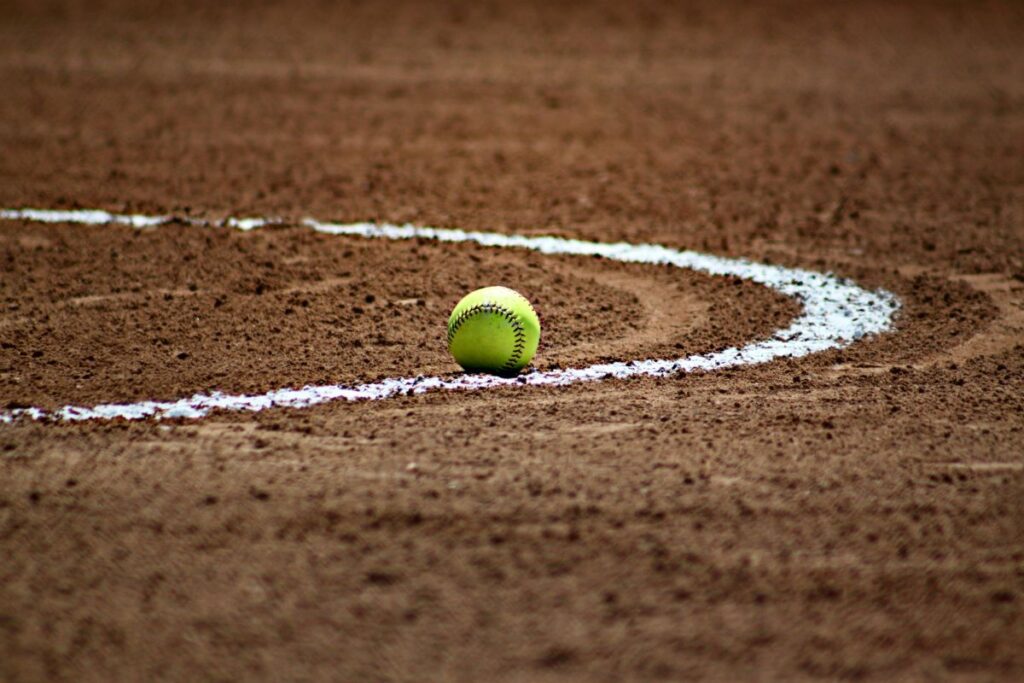Tennis balls and softballs are both spherical sport balls, but they have distinct qualities in terms of size, materials, weight, bounce, speed, spin potential, cost, and ideal usage.
Here are 11 ways tennis balls differ from softballs:
- Size – Tennis balls 6.5-6.7cm diameter, softballs 9.4-12.7cm.
- Weight – Tennis balls 57-59g, softballs 179-198g.
- Bounce – Tennis balls bounce higher with more deformation.
- Materials – Tennis uses rubber/felt, softballs have leather or synthetic covers.
- History – Tennis balls from 1500s, softballs from 1880s.
- Speed – Tennis serves hit 160+mph, softballs travel under 120mph.
- Spin – Tennis balls take more spin from racket friction.
- Records – Fastest tennis serve is 163.4mph, softball pitch 104mph.
- Brands – Wilson, Penn lead tennis balls; Dudley dominates softballs.
- Durability – Tennis balls lose pressure quickly, softballs very durable.
- Cost – Pack of 3 tennis balls is $5, softballs $20+ each.
Below we’ll explore their specialized designs to appreciate how tennis and softballs excel at meeting the needs of their respective sports!

Size Difference
Tennis balls have a diameter of around 6.5-6.7 cm. Regulation softballs measure between 9.4-12.7 cm across, almost double a tennis ball.
The larger softball size contributes to its heavier mass and easier contact off the bat. Tennis balls generate pace from a smaller footprint.
The softball looked gigantic lined up next to a tennis ball! The size contrast was obvious immediately.
Weight Difference
Tennis balls weigh 57-59 grams, with a light and fluffy feel. Softballs are much heavier at 179-198 grams depending on type, for solid contact.
That substantial weight difference – over 3 times heavier – gives softballs their momentum while tennis balls maximize speed.
Materials Used
Tennis balls have a rubber core surrounded by a fuzzy felt coating for grip and consistent bounce.
Softballs feature cushioned cork or rubber pill centers wrapped in leather or synthetic leather covers for durability.
So tennis ball materials promote bounce and spin while softballs prioritize structural longevity.
Bounce Characteristics
Tennis balls have a higher, lively bounce off the court thanks to their deforming rubber and felt. This helps generate pace.
Softballs undergo less compression on impact, resulting in a deader bounce that reduces distance lost on hits.
The tennis ball really kicks up off the racket compared to the dense, flatter bounce of softballs in the field.
Here’s a quick demo video of the bounce to expect from a softball:
History of Both Balls
Tennis balls evolved from wood and leather to rubber cores with pressurized fuzzy felt as materials science advanced through history.
Early softballs originated as indoor baseballs in the 1880s using rubber cores with leather covers. Larger outdoor softballs emerged in the 1930s.
So both trace origins back over a century alongside key innovations in ball manufacturing.
Speed Difference
Well-struck tennis serves utilize a flexible racket and light ball to reach 160+ mph speeds at the professional level.
The heaviest softball pitch on record is 104 mph. The ball’s mass prevents faster speeds off the bat or when pitched.
So tennis balls achieve substantially higher velocity off the swing.
Spin Potential
The fuzzy nap of a tennis ball surface grabs the racket strings to allow aggressive topspin and slice.
The slick leather or synthetic leather surface of a softball doesn’t grip the bat as effectively, reducing spin generation.
Tennis relies heavily on spin variations in play which softball eschews in favor of pure contact.
World Records
- Fastest tennis serve: 163.4 mph by John Isner
- Fastest softball pitch: 104 mph by Eddie Feigner
The 60 mph disparity demonstrates the speed difference.
Brands and Manufacturers
Wilson, Penn, Dunlop are big tennis ball brands.
When it comes to softballs, Dudley and Worth dominate the market.
Both sports benefit from specialty companies advancing ball tech.
Ideal Storage Methods
Tennis balls lose compression and go flat over time. Keeping in pressurized containers extends life.
Thanks to softball’s durable leather covers, they maintain quality for years with basic ambient temperature storage.
So softballs are less maintenance in storage over time.
Cost Considerations
Tennis balls can be bought for as low as $2 per ball in bulk packs. They’re a consumable.
High-grade softballs cost $20+ each and are built to last seasons before replacement.
So softballs carry a higher upfront cost but endure much longer with proper care.
In summary, while casual observers may confuse them, tennis and softballs differ radically in sizes, weights, materials, bounce, speed, spin, cost, and ideal handling. Their specialized designs make them perfectly suited for each sport!
